Art and the Religious Image in El Greco's Italy
IMAGES
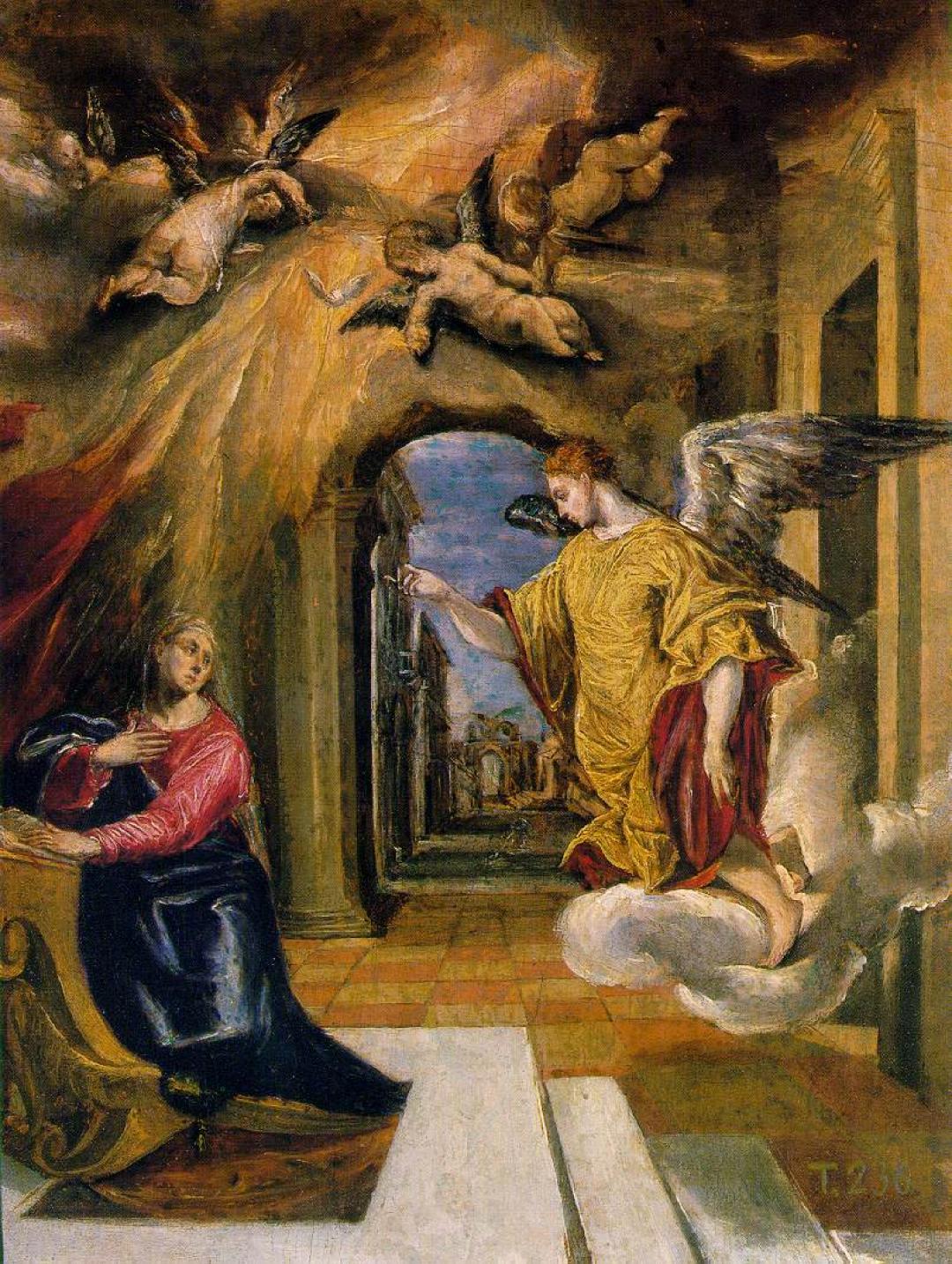
El Greco evidently followed both Tintoretto's and Titian's exemplary colorito when developing a style of painting that puts art in the service of religion. The modulated and textured use of yellow pigment materializes divine light and the incandescent glow that illuminates Mary's startled face as she glances up at the radiant angel suddenly appearing before her. Museo del Prado, Madrid. Image via Wikimedia.
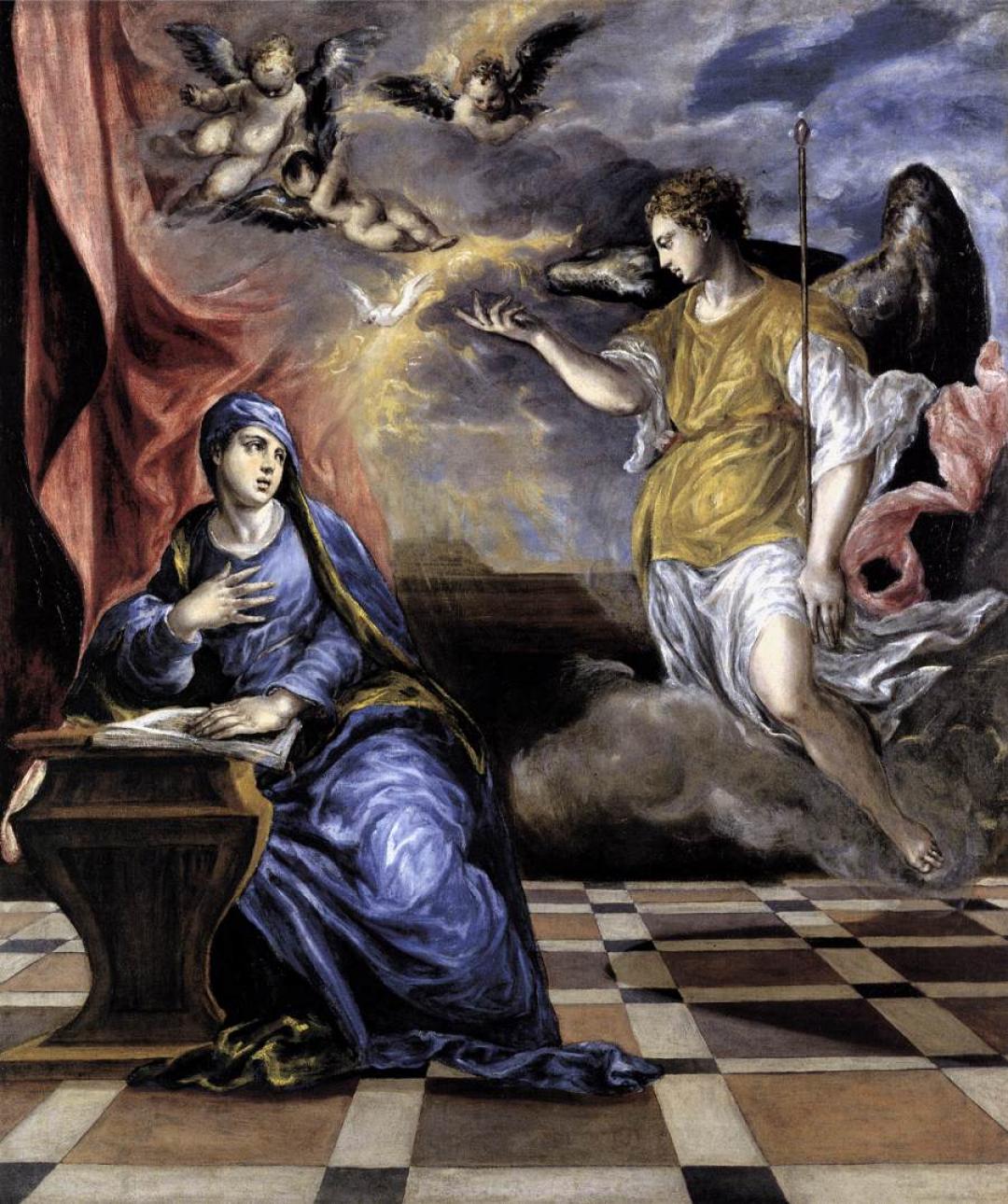
El Greco's Pietà and Annunciation represent a merger of distinct stylistic qualities. His acknowledgment of the differing strengths in the works of Michelangelo and Titian engendered a tacit familiarity with the understanding that the principles of painting depended on the mixture of disegno and colorito into a synthetic union. Museo Thyssen-Bornemisza, Madrid. Image via Wikimedia.
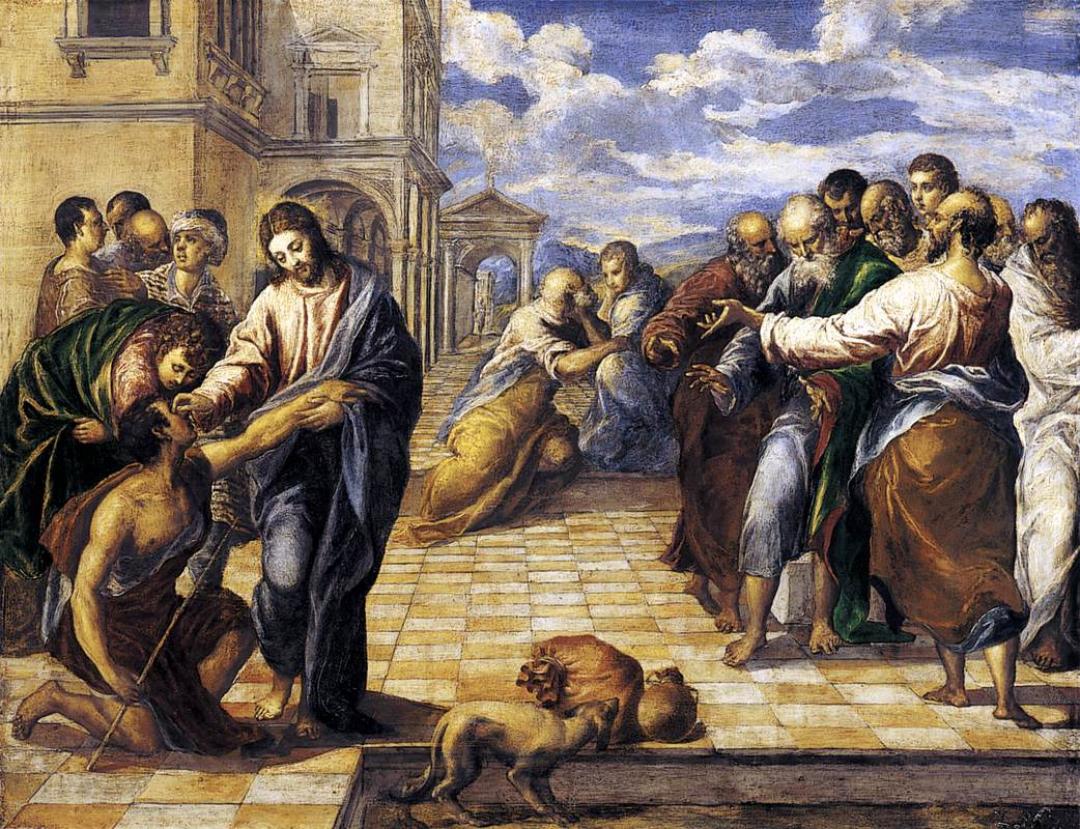
El Greco's pictures best match the account of the episode offered in John 9:1-41, when Christ encounters a blind beggar in the street just outside of the Temple in Jerusalem. In all three paintings El Greco collapsed various episodes into one composition, which requires an understanding of the entire story in order to read the composition properly. Gemäldegalerie Alte Meister, Staatliche Kunstsammlungen, Dresden. Image via Wikimedia.
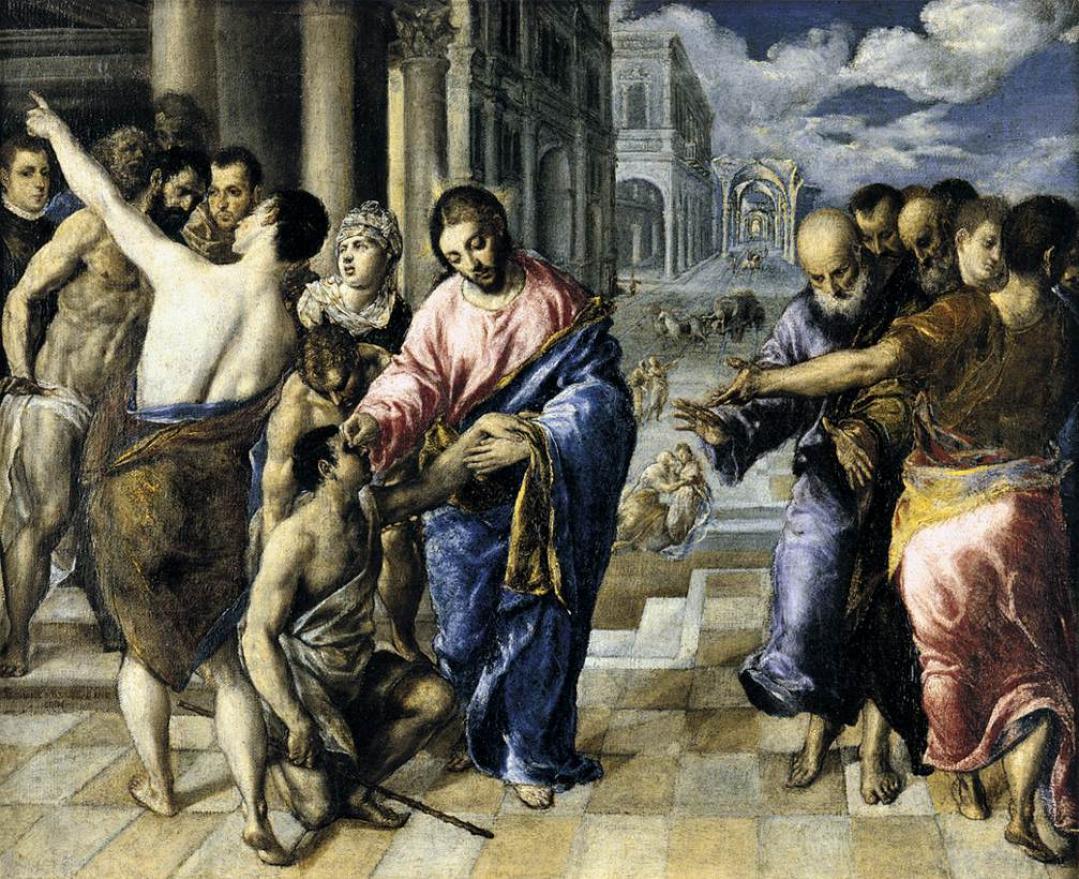
El Greco positioned Christ to the left of center, holding the arm of a figure squatting on his knee. It is presumably the same semiclothed figure, now excitedly exhibiting his newly acquired visual acuity, who gestures to identify a distant sight to prove to the doubters in front of him that he has attained the ability to see. The Metropolitan Museum of Art, New York. Image via Wikimedia.
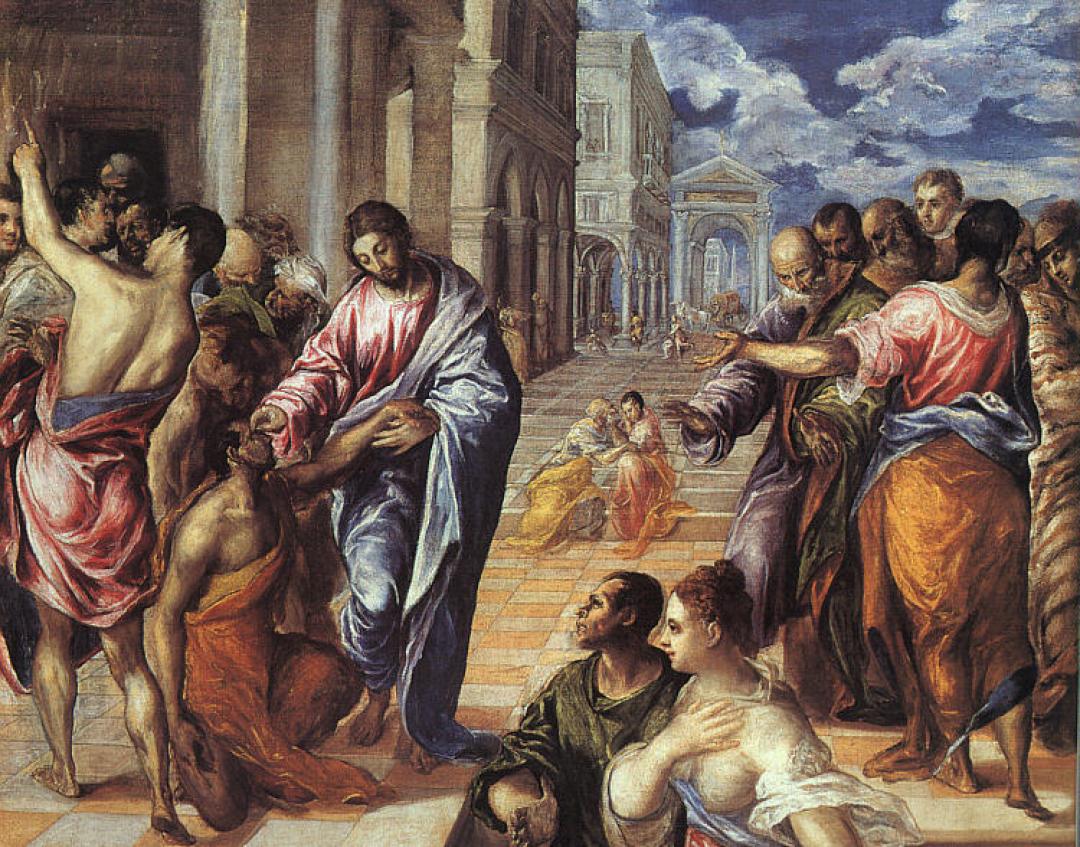
El Greco painted three similar editions of Christ Healing the Blind, probably completing the first near the end of his stay in Venice and the other two by the early 1570s in Rome. We see in them a repertoire of figures, motifs, spatial effects, and chromatic nuances that are largely underdeveloped or conspicuously absent from his earlier devotional panels. Galleria Nazionale, Parma. Image via Wikimedia.
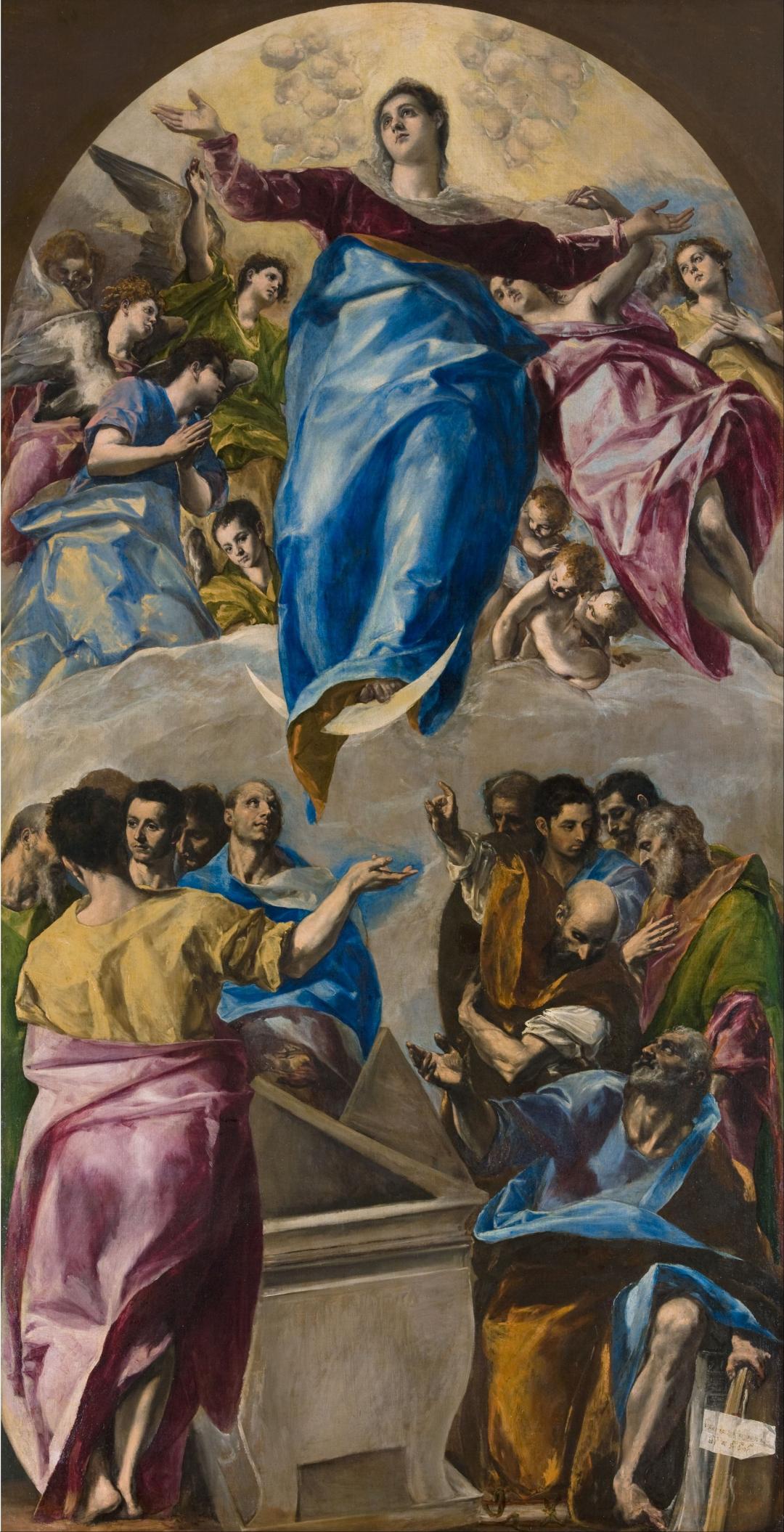
The upturned crescent moon underneath the Virgin's feet effectively makes El Greco's Assumption an Immaculate Conception, the doctrine stating that Mary had been born free of the taint of original sin. However, it is unclear if El Greco naively engaged a contentious theological dispute over the Virgin's purity or if this detail fulfilled a requirement to issue a pictorial statement in support of the doctrine. Image via Wikimedia.